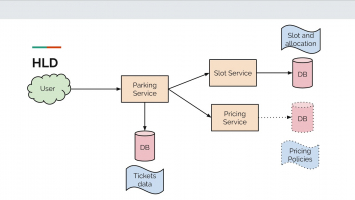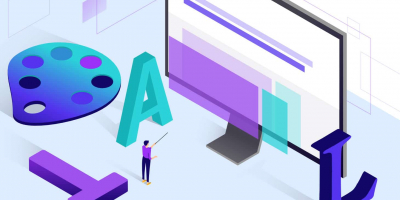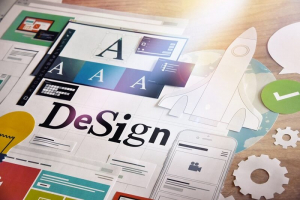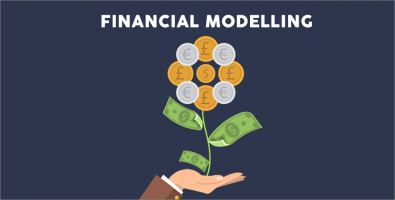Top 13 Best Online Visual Design Courses
Various items, such as magazine covers and advertising banners, display visual design. It can be seen in a variety of contexts, including advertisements, ... read more...flyers, movies, periodicals, and poster designs. All of them call for a lot of imagination and thoughtfulness, which can assist draw potential buyers' attention to your main page. You can take the best visual design courses whether you're an experienced designer looking to improve your abilities or a beginner who wants to learn visual design. Every level can take the courses. Here are some of the Best Online Visual Design Courses.
-
The retail design approach for the best shopper experience course will take you on a trip that begins with taking a step back and asking yourself numerous questions about the brand, its features, needs, future strategies, marketing tactics, selling style, and customers' browsing approaches so that you have a full picture before you start. The foundational framework must be defined first in order to start creating magic and the best possible shopping experience, therefore this stage is essential for the success of any retail design execution in the future.
Once you have a complete understanding of how to inform, entice, tease, and assist customers throughout their trip in any shop environment, you will be guided through every step of the customer's experience to ensure that you are addressing all rational and emotional features. Each stage is explained with examples drawn from various industries, and each part is concluded with a detailed checklist you may always refer to.
You will have a complete understanding of the shopping experience at the end of The retail design approach for the best shopper experience course, enabling you to design the ideal façade, windows, entry, zoning, furniture, cashier, color scheme, material selection, sound, branding, etc., for each customer and for any type of business. This is one of the Best Online Visual Design Courses.What you will learn
- You will have a thorough understanding of every question to ask yourself before beginning any kind of retail design project by the end of this course.
- Receive detailed check lists for each of the customer journey steps as you learn about them all.
- Learn to approach retail design holistically, including the use of materials, colors, and music to stimulate all the senses.
- Study a retail calendar to understand how to integrate the brand's events, promotions, and important messaging into the in-store environment.
- Learn about the various zoning regulations to provide the greatest shopping experience regardless of the store layout.
Who this course is for
- Retailers and retail organizations that aim to comprehend the characteristics of the ideal consumer experience, regardless of the setting or the type of goods.
- Individuals with experience in the fields of architecture, design, visual merchandising, marketing, and retail marketing who are eager to pick up new abilities and develop a detailed to-do list for their future careers
- Entrepreneurs having a goal and the desire to communicate with and understand industry consultants.
Instructor: Mehdi Draoui
Udemy rating: 5.0/5.0, 8 reviews
Enroll here: https://www.udemy.com/course/the-retail-design-approach-for-the-best-shopper-experience/

https://sesja.studentnews.pl/ 
https://www.experto.de/ -
This online course - Digital design school - Learn and improve as a designer fast - lasts for 8 weeks and is self-paced. This bootcamp has been created to give you the quickest route to improving as a designer and the greatest guidelines and tasks to practice in order to advance your design abilities. Additionally, you will gain more value as a designer as opposed to merely a pixel pusher.
Everyone is searching for the magic trick or the secret sauce since learning design is a difficult process. Sadly, there isn't a great secret that will enable you to achieve design mastery more quickly. However, there are specific study and practice methods that will accelerate your learning and improve your design skills in a shorter amount of time.
The training employs a method called learn by doing. When you want to be a designer, you don't want to sit through hours of tedious theory lectures; you want to make cool designs. This course makes learning more enjoyable and is statistically supported as a superior method of learning since it teaches you the theory while you create.
You'll have a new project every week. This involves eight various design initiatives, such as responsive web pages, desktop apps, and mobile apps. Each week, you will receive assignments. a schedule of design challenges, the main project to focus on, and some reading recommendations. The projects will build upon one another so that you can apply everything you have learned and have numerous chances to use your new abilities. You will discover a sound design methodology from this bootcamp that is utilized by leading businesses. This course's ability to provide you with a clear route to improvement is one of its strongest features. You'll get better if you follow the procedure! So why are you still waiting? Get your hands dirty and let's design!
What you will learn
- Visual design skills
- User interface design
- User experience design
- Design fundamentals
- Typography
- Layout
- Colour theory
- Gestalt
- Animated prototyping
Who this course is for
- Beginner and Mid-weight designers will benefit most but any level designer can improve using this course
Instructor: Rob P
Udemy rate: 5.0/5.0, 2 ratings
Enroll here: https://www.udemy.com/course/digital-design-school-how-to-improve-as-a-designer-fast-c/
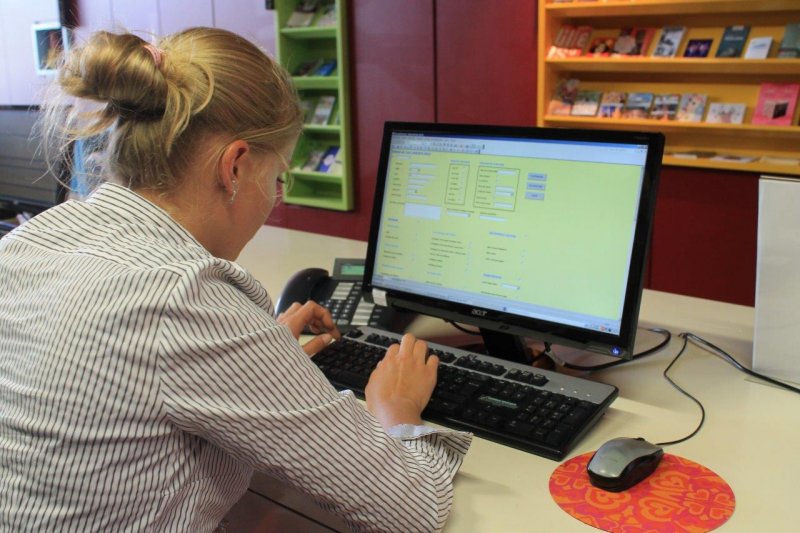
https://otfutur.lenord.fr/ 
https://www.elperiodico.com/ -
Typography is the practice of enhancing and regulating the meaning of language through its visual representation. It's a crucial set of abilities and information for graphic designers. By almost 500 years, typography precedes contemporary graphic design; it is rich in rules, norms, and esoteric terminology—yet it continues to be a stimulating environment for creativity and expression. This can be considered as one of the Best Online Visual Design Courses.
In this demanding introductory course - Introduction to Typography, you will research, identify, and quantify the traits of letterforms. The practical considerations related to type selection and combination will be covered in this course. You'll get a glimpse into the fascinating historical, cultural, and aesthetic backgrounds of well-known typefaces. You'll go through tried-and-true standards and best practices for establishing type as they relate to hierarchy and spatial organizing principles. Additionally, you'll look into how type may express itself and convey meaning.
Three peer-assessed assignments will be given in addition to the educational lectures, with the final assignment giving students the chance to design a large-scale typographic poster. Please be aware that Introduction to Typography is not a software course and that it will be expected that you are familiar with Adobe InDesign or another page layout program on a basic level. To finish the assignments, you'll need a computer and page layout software like InDesign.What you will learn
- Review the language and scales used to describe types.
- Examine the narrative power of typefaces and learn about their historical development.
- Run a typesetting exercise that is approved by peers.
- Create a large-scale typographic poster.
Skills you will gain
- Creativity
- Adobe Illustrator
- History
- Graphics
- Adobe Indesign
Instructor: Anther Kiley
Offered by: California Institute of the Arts
Coursera rate: 4.8/5.0, 5282 reviews
Enroll here: https://www.coursera.org/learn/typography

https://www.mientrastantoenmexico.mx/ 
https://www.flickr.com/ -
Everywhere people look, graphic design can be found in a variety of print and digital formats, but it always combines words and images to achieve a communication objective. The Graphic Design Specialization introduces students to the process, historical context, and communication through image-making and typography—the core skills needed to produce expert graphic design. A capstone project that integrates the knowledge from all of the courses and incorporates peer feedback culminates the series and creates a final branding project appropriate for a professional portfolio.
There are graphic designers all across the world! The majority of content is carried by words and images, which are the foundation of graphic design, in both the printed and digital worlds. Graphic design as a practice gains importance in culture as it gets more apparent and pervasive in people's lives. This workshop is intended for both novice and experienced photographers. Graphic design's dynamic and engaging field of imagemaking results from practice and process: experimenting freely, showcasing and exchanging ideas, and providing and receiving informed, helpful feedback. You'll learn why things look the way they do, how designers solved particular design difficulties in their work, and the history of design as a discipline.
Providing learners with a set of transferable formal and conceptual skills for "creating and communicating" in the field of graphic design is the aim of Graphic Design Specialization. This foundational skill set will prepare students for formal graphic design courses and serve as a springboard for additional work in editorial design, interface design, and motion graphics.
What you will learn
- Acquire the foundational abilities required to become a graphic designer.
- Create and use images and typography to communicate
- Finish a capstone undertaking to enhance your professional portfolio.
- Learn all the skills required to work in editorial design, motion graphics, and interface design.
Skill you will gain
- Visual Communication
- Branding Communication
- Graphic Design
- Art History
- Typography
- Creativity
- Graphics
- Design Theory
- Color Theory
- Adobe Illustrator
- History
- Adobe Indesign
Instructors: Michael Worthington, Anther Kiley, Gail Swanlund and 2 more instructors
Offered by: California Institute of the Arts
Coursera rating: 4.7/5.0, 14.891 reviews
Enroll here: https://www.coursera.org/specializations/graphic-design

https://www.ebaqdesign.com/ 
https://fakecrow.com/ -
The general question of what an interface is and the function of a designer in producing a user interface are both topics covered in this design-focused course. Making interfaces function clearly and fluidly requires understanding how to design and express meaning using color, font, and imagery. You will concentrate on the several distinct features and components that make up the skill set of an interface designer through Visual Elements of User Interface Design course and visual activities. You will be able to apply your newly acquired abilities to the design of a static screen-based interface at the end of this course. You will be able to describe the major formal components of clear, consistent, and intuitive UI design. This is considered as one of the Best Online Visual Design Courses.
Visual Elements of User Interface Design is the first course in the UI/UX Design Specialization, which offers practical, skill-based instruction centered around a visual communications perspective rather than one that is solely focused on marketing or programming. It brings a design-centric approach to user interface (UI) and user experience (UX) design.Anyone with some expertise in graphic or visual design who wants to expand their skill set in UI or UX for app and web design should take one of these courses. Anybody who has knowledge of front- or back-end web programming or human-computer interface and wants to hone their visual design and analysis skills for UI or UX would find it to be ideal.
Skill you will gain
- User Interface Design (UI Design)
- User Experience (UX)
- Graphic Design
Instructor: Michael Worthington
Offered by: California Institute of the Arts
Coursera rating: 4.7/5.0, 5358 reviews
Enroll here: https://www.coursera.org/learn/visual-elements-user-interface-design
https://eleganceaum2.fr/ 
https://www.digitaltransformationsolutions.com.au/ -
In Graphic Design Elements for Non-Designers Specialization, you will study fundamental principles of graphic design, color theory, imagery, publishing design, and methods for making layouts that work. Additionally, you will discover the value of brainstorming, learn about typography, the creative process, and discover how to discuss and evaluate design in a professional setting. Text, color, pictures, and images will be incorporated, as well as edited, using page layout tools and web resources.
Graphic Design Elements for Non-Designers Specialization is created for you if you are interested in the design process, work with designers on a team and need to speak a little of their language, or want to inspire the creatives on your team to be even better.
You'll create a brochure, an advertisement, a business card, a one-sided flyer, and a website's outline. Additionally, there will be a peer review process for each assignment in this course as well as optional discussions with other students. You are encouraged by this specialization to seize each of these chances and fully engage in the design process.
What you will learn
- Appreciate the study of conceptual aspects and design layout in relation to design projects.
- Examine fundamental design principles for use in the workplace, including as typography, color theory, image choice, and layout best practices.
- Create fundamental creative works, such as business cards, brochures, advertisements, websites, and manuals.
- Learn how to collaborate and communicate with graphic designers and other creative industry experts.
Skill you will gain
- Textual elements and manipulation
- Color Theory
- Online design
- Graphic Design
- Print Design
- Textual elements
Instructor: Lori Poole
Offered by: University of Colorado Boulder
Coursera rating: 4.7/5.0, 940 reviews
Enroll here: https://www.coursera.org/specializations/graphic-design-elements-non-designers

https://asperbrothers.com/ 
https://www.control-messe.de/ -
You will use Adobe Illustrator to produce a content-rich infographic on a subject of your choice as part of this project-based course - Design and Make Infographics. If you want to describe a corporate trend or environmental concern, convey a theme or development from your personal life, or even make a visual representation of data from the worlds of sports, entertainment, politics, or science, all of these options are available to you. The final infographic will effectively employ design aspects like typography, color, and structure to engage your target audience and communicate information in a clear and concise manner.
You will learn: what an infographic is and what makes a good one, how to work within your constraints, how to work with a team (if you have one), why infographics are effective, techniques for spotting data in stories, and more, whether you're a graphic designer, a writer, or the department's intern and so on.
You will gain more knowledge about infographics' effectiveness, what constitutes a successful infographic, and how to plan and design an infographic for maximum impact as you progress with your project in Design and Make Infographics course. In your free edition of Adobe Illustrator, you'll practice making visualizations including maps, charts, flow charts, and simple drawings as you learn different methods for visualizing data.
Anyone interested in understanding, creating, and using infographics, from students and amateurs to professional graphic designers, should take this project-based course. Adobe Illustrator will be used in this course for some of the project's components. You can get a free version of Illustrator from www.Adobe.com/Illustrator if you don't have access to the full version.
What you will learn
- Definition of an infographic and criteria for a quality one
- Working within your limitations
- How to work in a group (if you have one)
- The benefits of using infographics to spot data in stories
- Six useful guidelines for creating a successful infographic
- How to use and create some of the infographics' fundamental components Charts, maps, and flowcharts
- Ways to visualize data to make it clearer and more meaningful
- How to use features like font, color, and an underlying grid structure to effectively build a nice infographic.
- Several affordable or free internet tools for creating different types of infographics
Skills you will gain
- Infographics
- Illustration
- Communication Design
- Graphic Design
Instructor: Karl Gude
Offered by: Michigan State University
Coursera rating: 4.7/5.0, 930 reviews
Enroll here: https://www.coursera.org/learn/infographic-design

https://yle.fi/ 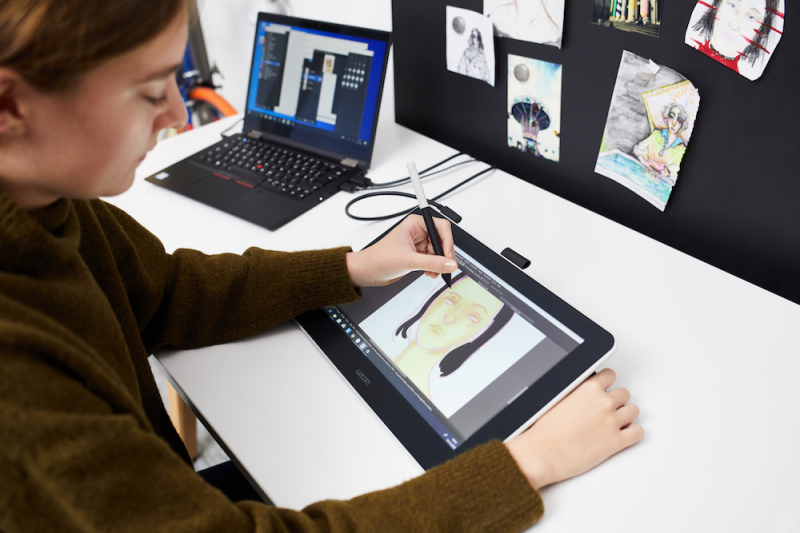
https://theoldnow.it/ -
Study the principles of UX (user experience) research and designv in Principles of UX/UI Design course. Immerse yourself in the UX process, which involves identifying problems, testing designs, and iterating until the right one is found. By using best-practice research methodologies, you'll develop user personas and other typical UX artifacts while developing your ability to empathize with users. And to decide on relevant design choices, you'll employ UX insights.
You will be able to develop wireframes for features in Figma using the User Interface (UI) design process, and you can then take these mockups and turn them into Minimum Viable Products (MVP)-style prototypes. Additional design fundamentals like hierarchy and grid usage will be covered.
By the end of the Principles of UX/UI Design course, you will be able to: design digital products that add value and meaningfully address user problems; identify the characteristics of successful UX/UI; assess the design consistency and quality of existing interfaces; identify best practice interaction design methodologies; and evaluate and improve both your own and other people's designs. You will also be able to create, share, and test your UX/UI designs in accordance with best practice guidelines.
This is an introductory course for students who want to get ready for a career in UX/UI development. You only need a basic understanding of how to navigate the internet and a desire to study to succeed in this course; prior development experience is not required. This course can be seen as one of the Best Online Visual Design Courses.What you will learn
- Give an explanation of the foundations of user experience (UX) design and research.
- Describe the factors that should be taken into account for accessibility in design.
- Utilize Figma to create prototypes and wireframes.
Skill you will gain
- Web Design
- Front-End Web Development
- User Experience (UX)
- Accessibility
Instructor: Meta Staff
Offered by: Meta
Coursera rating: 4.7/5.0, 90 reviews
Enroll here: https://www.coursera.org/learn/principles-of-ux-ui-design

https://www.scoopnest.com/ 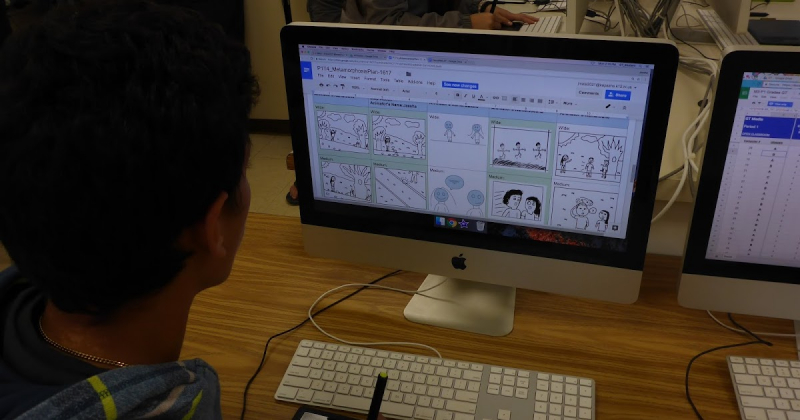
https://jaeshamata.blogspot.com/ -
A thorough, unbiased evaluation of a graphic design's efficacy is referred to as a criticism in The Language of Design: Form and Meaning course. For designers, criticism is an essential component of the creative process because it not only helps us decide whether a piece of design is successful or not, but also helps people advance their own work. Other voices and perspectives can be added to the design process through critique.
To enable you to speak about graphic design in the context of critique in a clearer and more thoughtful manner, this course will introduce a lexicon (or vocabulary). You will practice objectively describing how effectively a work of design functions based on particular, clearly stated criteria using this language and the critique framework that is offered. You can improve your ability to talk about design with peers, colleagues, and clients by honing this talent.
Any stakeholder in a design project who needs to effectively communicate with designers on their team, including practicing graphic designers at all levels, future and current students in art or design programs, teachers of visual art, design, or related subjects, and anyone looking to develop and refine a critical vocabulary around talking about art and design, should take The Language of Design: Form and Meaning course.To advance their graphic design skills, students enrolled in either the Coursera Graphic Design Specialization or the UI/UX Design Specialization are advised to take this course. Before, during, or after finishing either Specialization, you may enroll in this course.
Please take note that The Language of Design: Form and Meaning is not a general audience course on art appreciation. The knowledge and abilities taught in this course are relevant only if you have some connection to design in a professional environment, such as practicing, researching, or teaching design, or working directly with designers, even if no prior experience is necessary to start.What you will learn
- Recall and define a vocabulary of important terms related to form, meaning, and audience, and successfully integrate it into an evaluation of graphic design.
- Establish and clearly state the standards for effective design project outputs that are not influenced by personal preferences.
- Utilize numerous methods of objectively discussing the visual form, meaning, and context of a specific work of design.
- Gain the capacity to interact with a design work in a neutral manner.
Skills you will gain
- Visual Communication
- Graphic Design
Instructors: Yasmin Khan Gibson, Randy Nakamura
Offered by: California Institute of the ArtsCoursera rating: 4.6/5.0, 668 reviews
Enroll here: https://www.coursera.org/learn/design-language
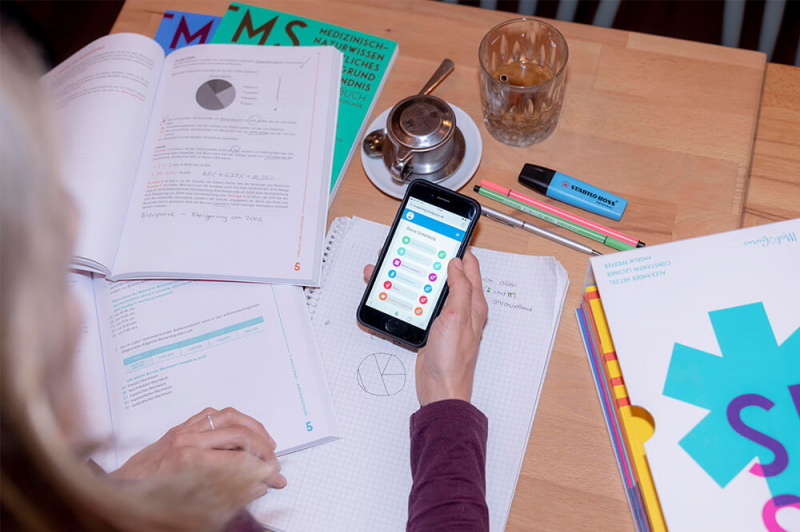
https://medgurus.de/ 
https://www.raconteur.net/ -
You will learn the fundamentals of visual design theory, the necessity for it, how to use it in your projects, and the distinction between art and design in this course. Design Theory: The basics of visual design course is for you if you want to learn the fundamentals of visual design theory, need a fast refresher, or are just starting out in design. Additionally, completing this course and comprehending the design principles that are applied when working with design aspects will give you the creative assurance necessary to explain your design choices and creations with confidence.
The instructor has distilled the knowledge that will demystify many of the design terms you will encounter in the design industry. The instructor is a self-taught graphic, UI, UX, and visual designer with more than 10 years of experience (designing for both big and small companies as well as individuals). He will deliver it simply and casually, making design theory simple for newcomers to understand. This has aided him in his work as a designer. Bonus material is also provided, expanding on the foundations of visual design that every designer should be familiar with. You will get lifelong updates in addition to lifetime access to Design Theory: The basics of visual design course.
What you will learn
- Definition of design theory and connection between art and design
- Fundamental components of visual design
- Guidelines for effective visual design (a necessity for graphic design, logo design, UI, UX, web, t-shirt design, print and more)
Who this course is for
- Beginner visual/graphic designers looking to improve the quality of their work
- Front-End Developers that need to understand design theory
Instructor: Robin Louw
Udemy rating: 4.3/5.0, 47 reviews
Enroll here: https://www.udemy.com/course/design-theory-the-basics-of-visual-design/

https://doit.pt/ 
https://www.learnship.cn/ -
What if you could learn a few simple color-related secrets in less than 75 minutes and instantly become more influential, productive, communicate better, and have more control over how people view and treat you? Understanding how colors affect us and other people is like learning a secret handshake that will help you sway life more in your favor over time. Life Hack With Color Psychology: Increase Your Influence course will teach you how with useful advice you can use even before you've finished all the lessons. This course was designed as a fundamental introduction to color psychology, and in just a few courses, you'll be using your newfound color superpowers.
What color should you wear on your first date to make their heart skip a beat? What if you needed to stand out in a room full of extroverts or during that sales pitch at work to gain support and money for your new project? What calming hue will help your baby relax at home so you can sleep and will keep the office troll off your back at work?
People respond and think based on emotions, thus utilizing color intelligently can have an impact on others' feelings and behavior. Did you know that color enhances brand recognition by 80% and that 85% of consumers cite color as the main reason they choose a certain product? Discover the colors that will best promote your thoughts, your message, and your offerings. To guarantee that you are delivering your message clearly when producing presentations and using visual communications, use the color approaches covered in Life Hack With Color Psychology: Increase Your Influence course.
What you will learn
- In less than two hours, drastically increase the influence you have.
- All of your visual communications and presentations will better convey your message and set the tone.
- Make better informed selections when selecting colors to promote your concept, point of view, or brand.
- Encourage your viewers to support a cause, attend an event, donate money, or purchase your goods by appealing to their emotions.
- When dealing with problematic people, use color (adults AND children.)
- Get a psychological edge during a job interview to increase your chances of success.
- Take advantage of color at work, in your art, and at home.
- Recognize the subtle ways in which politicians, advertisers, and marketers use color to affect the feelings and perceptions of the public.
Who this course is for
- Any artist, designer, or visual communicator who wants to increase the impact of their work must take this course.
- For those who want to make a bigger difference at work and at home, including business owners, educators, academics, marketers, parents, and health and wellness enthusiasts, this course is also very helpful.
- This training will also benefit quiet experts and thoughtful individuals who don't always want to have to outshout the room's loudmouths in order to be heard.
Instructor: Kristen Palana
Udemy rating: 4.2/5.0, 223 reviews
Enroll here: https://www.udemy.com/course/lifehacking-with-color-psychology/

https://www.bnext.com.tw/ 
https://www.grupoioe.es/ -
When novice or even seasoned designers don't know the concepts and processes of Graphic Design, they frequently produce designs that are dull and occasionally ugly. Design is more science than art. Why does one design seem to function and feel better than another? If so, when did you last consider it? Or describe the technique used to produce awesome designs. These topics will be covered in great detail in this course using several examples.
The goal of this course - Visual Design for Web Designers, UI Designers & Developers - is to teach you the basics of graphic design and the design process so you can improve your designs and understand how to start them in the first place. This course is for you if you didn't have a chance to take Design Theory in college but still want to create awesome-looking mobile apps or websites.
The aim of every design, stealing design ideas, learning design theory from a UI design perspective, and many career-advancing techniques and recommendations with plenty of examples are just a few of the NEW things you'll learn in this course. Everyone who wants to learn more about design or who wants to get the feel of it should take this course. Let's dig in and discover what design is really all about. This can be seen as one of the Best Online Visual Design Courses.
What you will learn
- Discover the Design for Non-Designers approach in secret.
- To improve your web design and user interface design, accurately apply visual design principles.
- By mastering visual design principles, you can take your designs to the next level.
- Learn how to develop a sleek design step by step to stop making ugly designs.
- Initially, design with a purpose.
- View countless design samples to learn from them.
Who this course is for
- Beginner Designers
- Web Designers
- Graphic Designers
- Developers
- Anyone who wants to learn Design
- Newbies
Instructor: Muhammad Ahsan Pervaiz
Udemy rating: 3.8/5.0, 414 reviews
Enroll here: https://www.udemy.com/course/graphic-design-for-web-designers-ui-designers-developers/

https://asidesweat.com/ 
https://co-well.vn/ -
You will learn the principles of game level design in this course, a critical component of video game design that revolves around the building of playable areas. It is your responsibility as a level designer to develop engaging levels that influence how the player(s) proceed through the game, frequently without the player(s) being aware of it.
The fundamental ideas and critical processes in the design process will be covered in this course as well as the fundamental principles involved in creating a game level. The Basics of Level Design course examines what a level is, who creates levels, and the many roles played in level design for video games.
The Basics of Level Design course will describe the components of the various stages of the design process utilized in the gaming industry and how they have changed over time using various sample designs, such as dungeon design and other well-known genres of roguelikes and adventure games.
At a glance
- Institution: LaSalleX
- Subject: Computer Science
- Level: Introductory
- Prerequisites: None
- Language: English
- Video Transcript: English
- Associated programs: XSeries in Introduction to Level Design
Who this course is for
- How level design has changed and how it affects the gameplay
- A summary of some of the important responsibilities involved in the level design process as well as common milestones.
- How to put story-based level design into practice.
- How dungeon design has changed within the framework of video games, particularly the well-liked adventure and roguelike game genres.
Instructors: Tahirah Mirza, John Appleby
eDX rating: unknown
Enroll here: https://www.edx.org/course/introduction-to-level-design-2/

https://dataclaritycorp.com/ 
https://www.pinterest.com/















